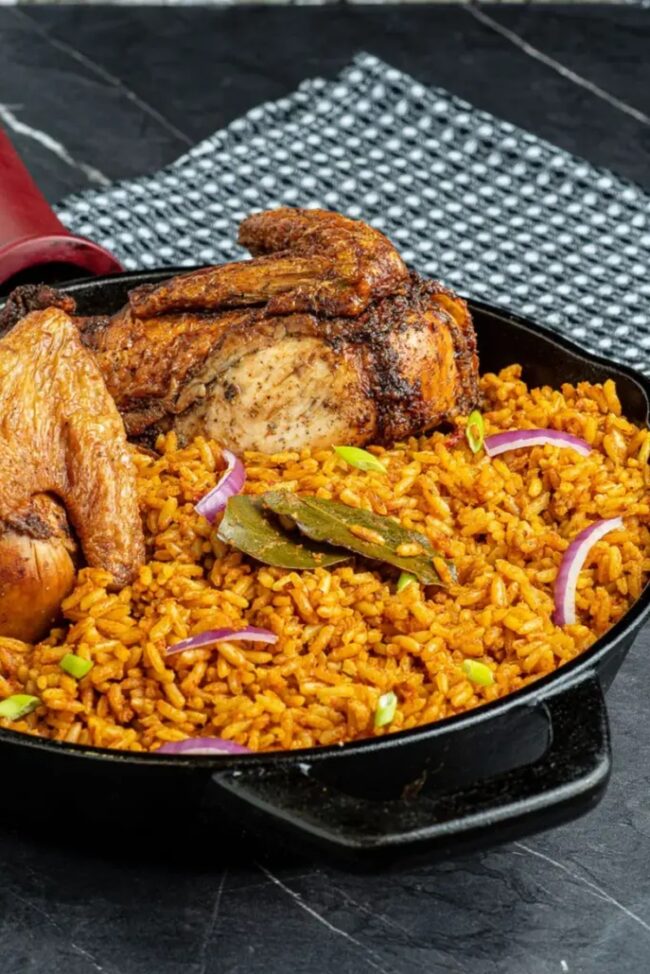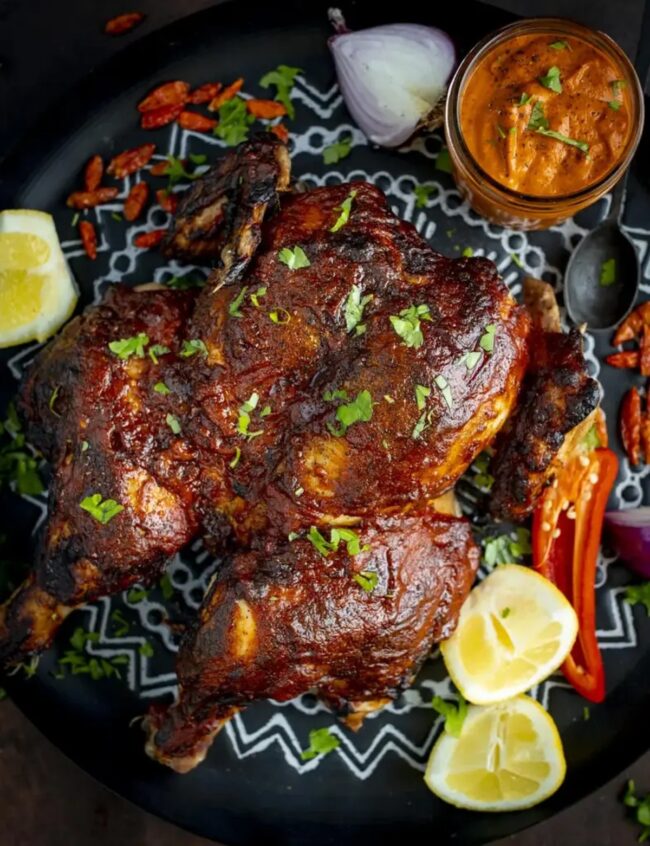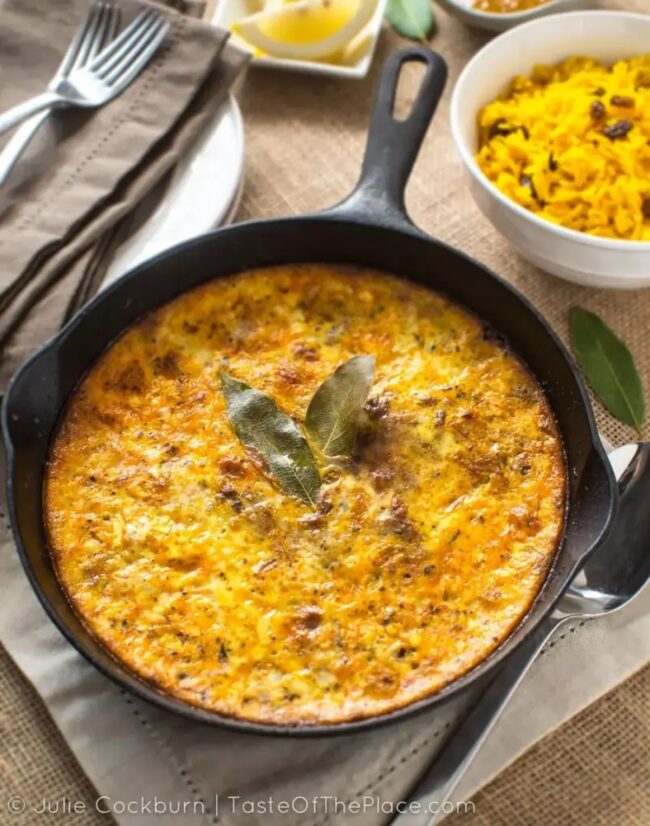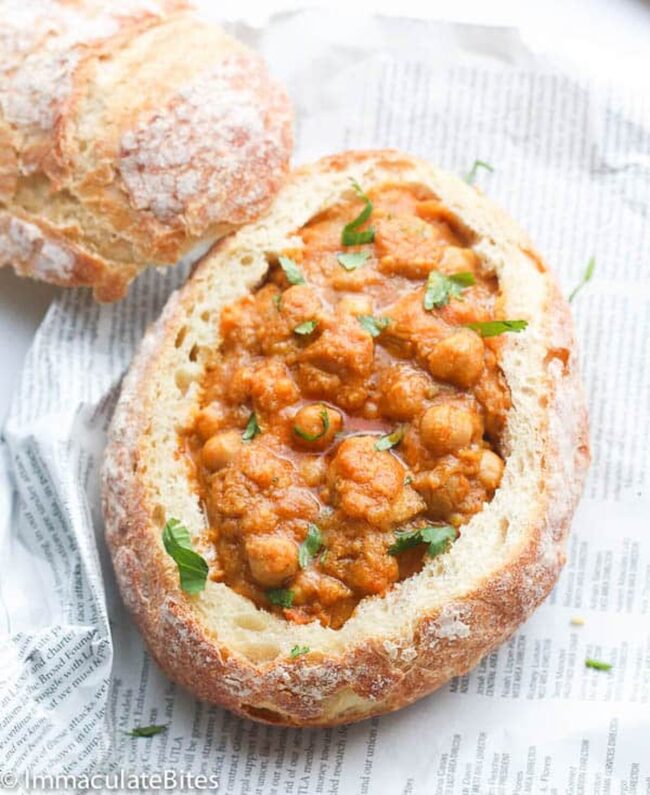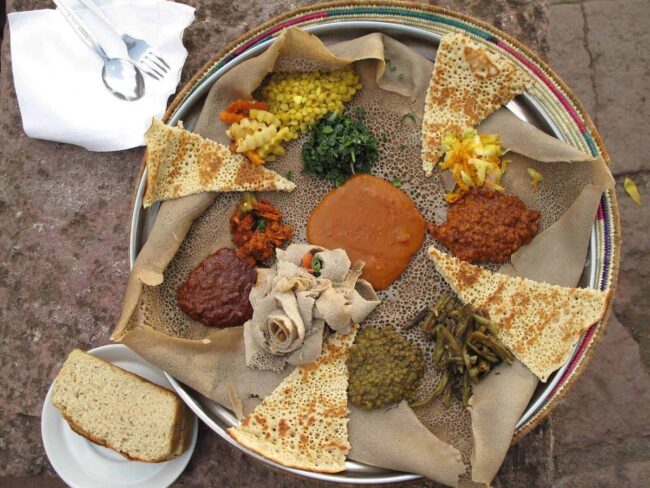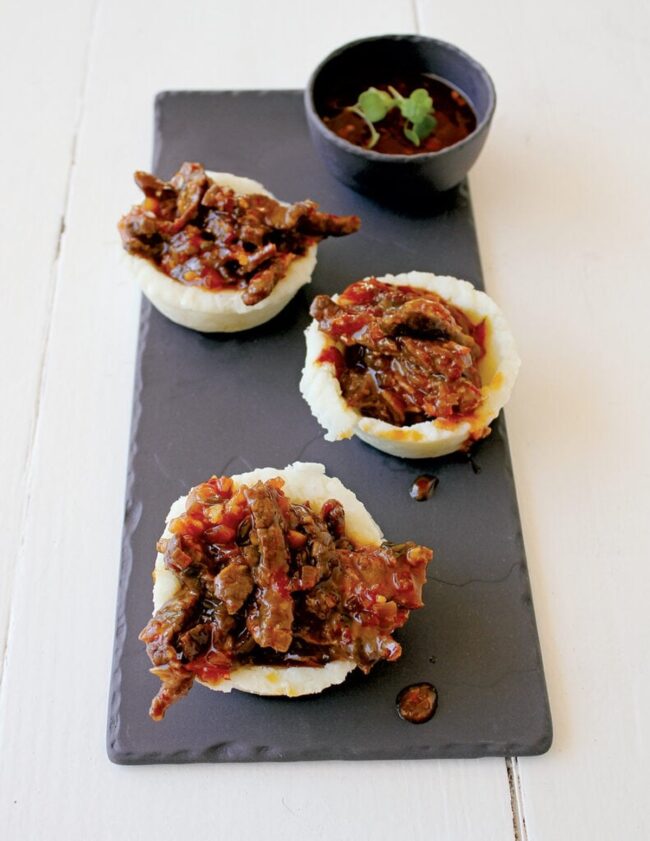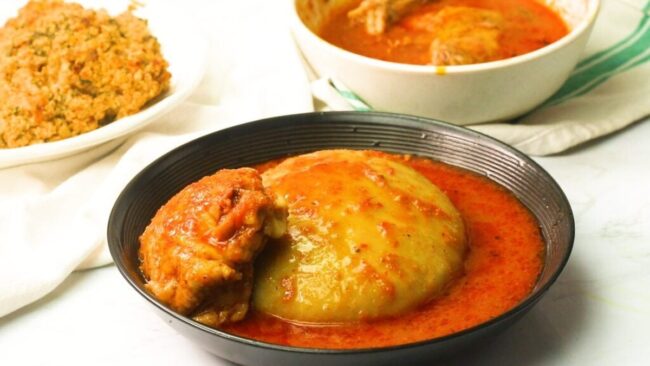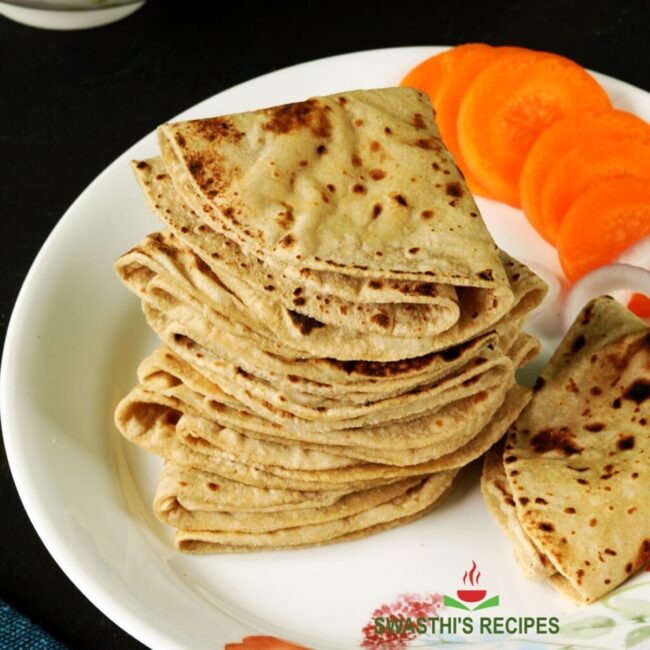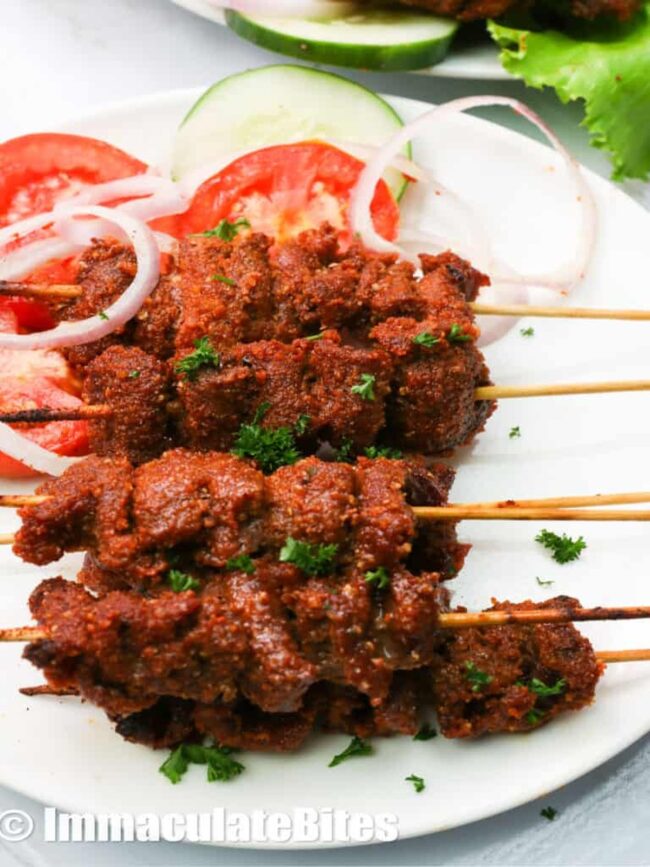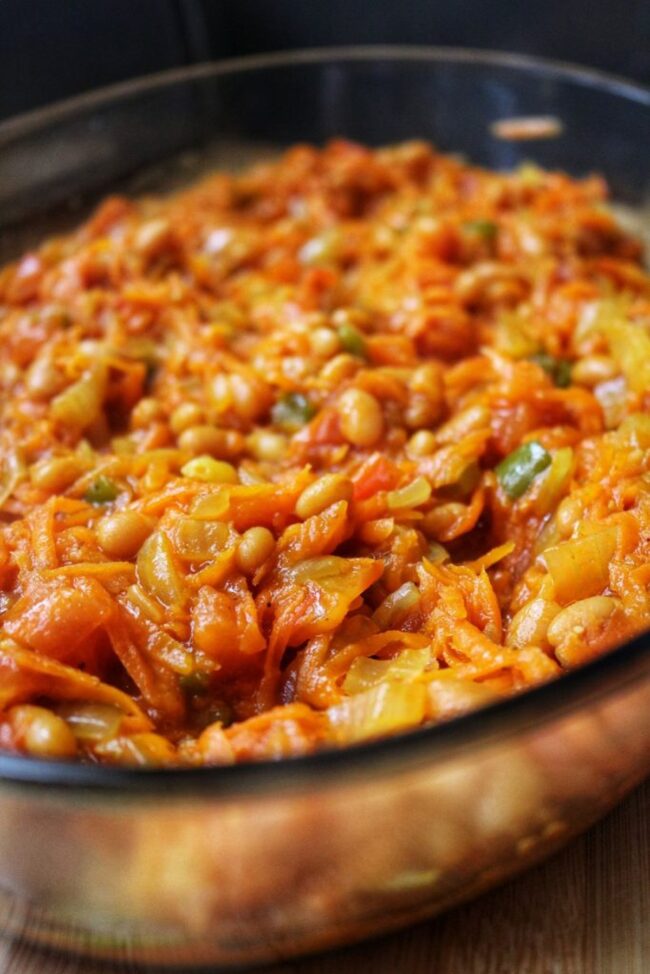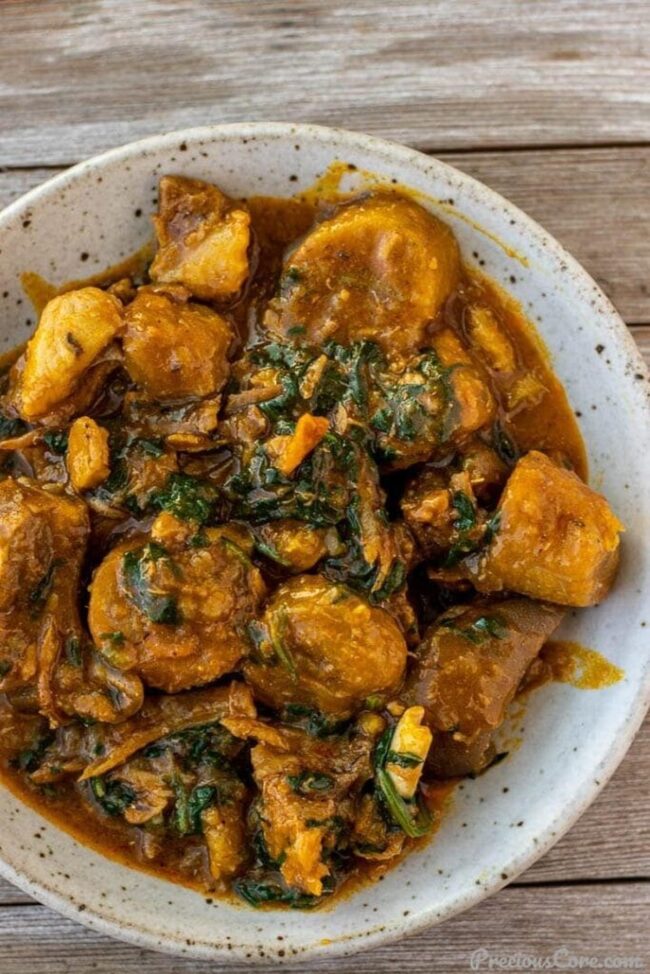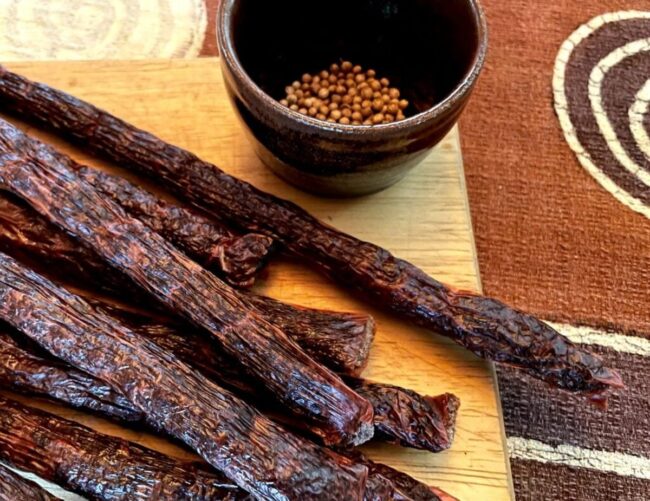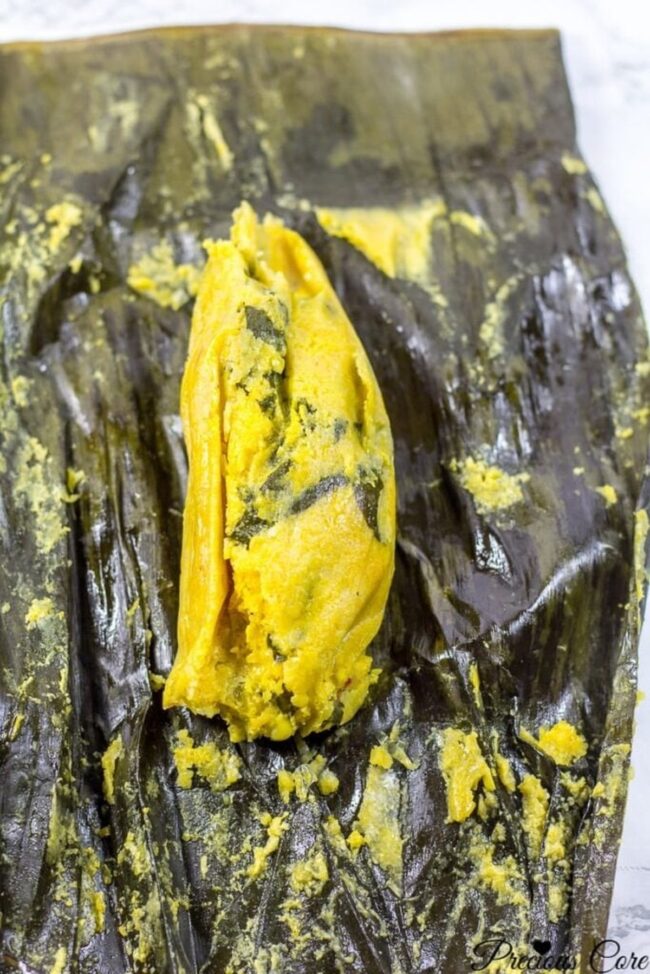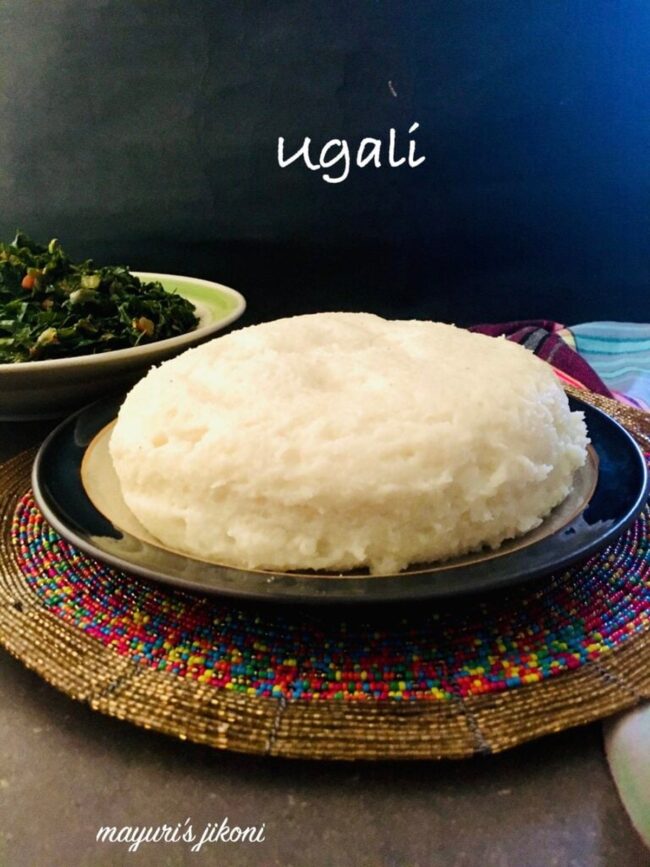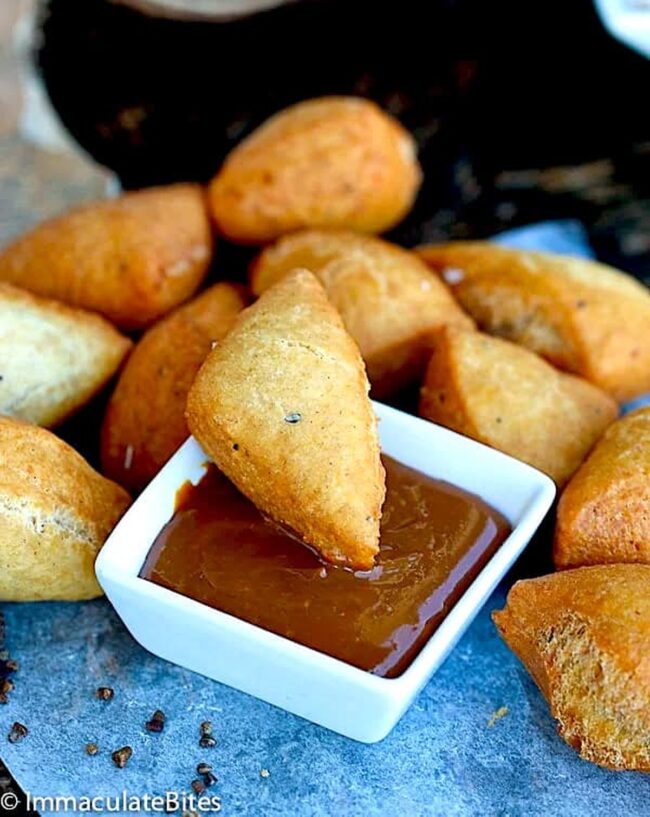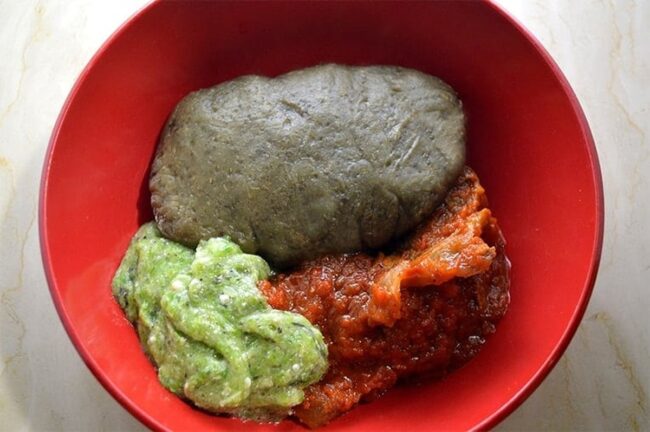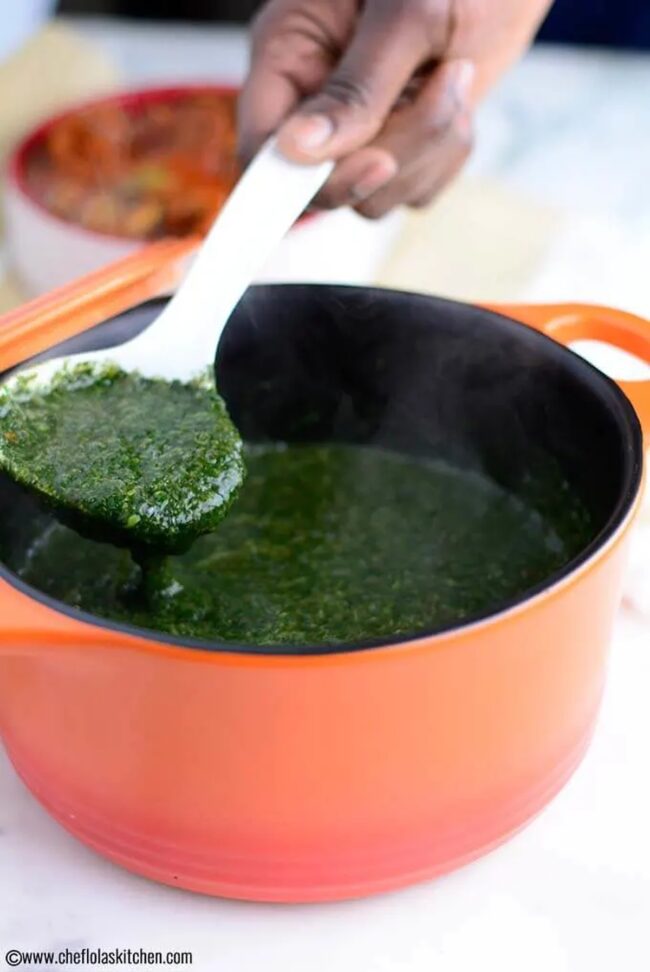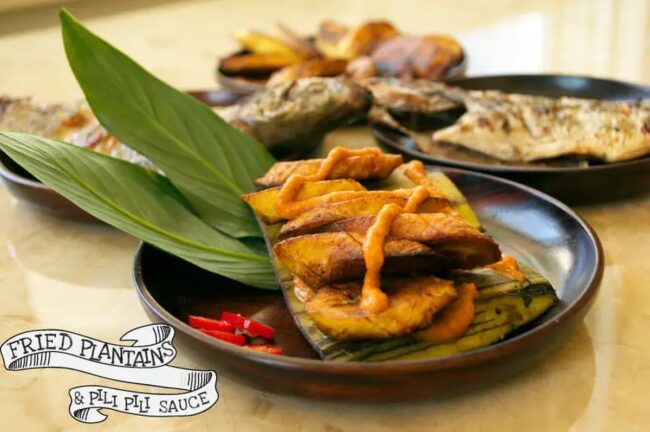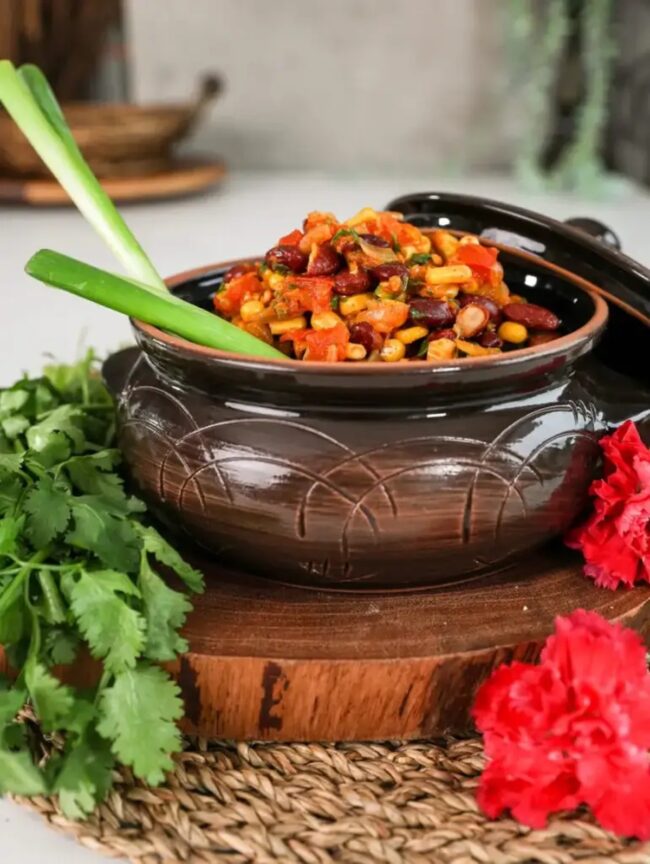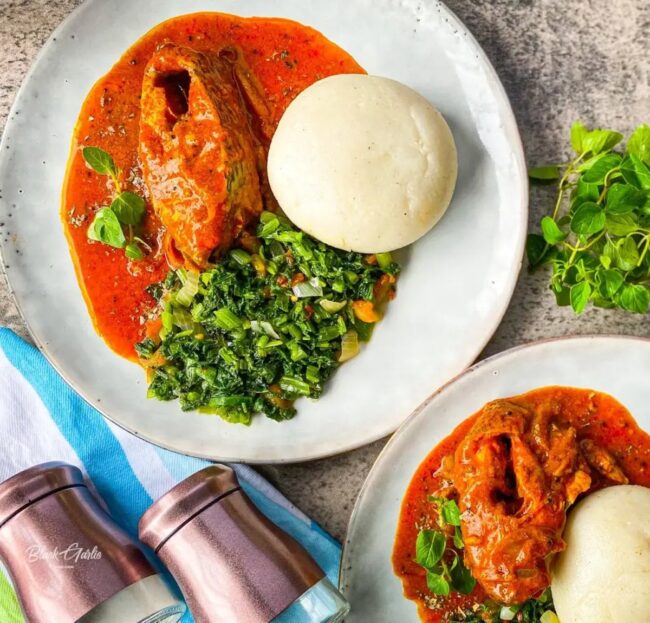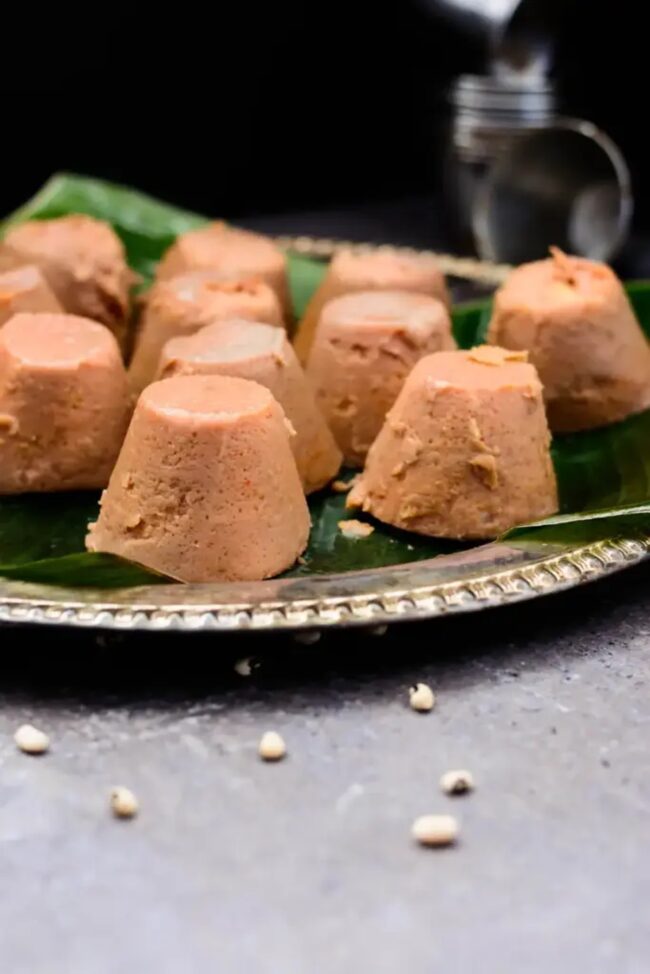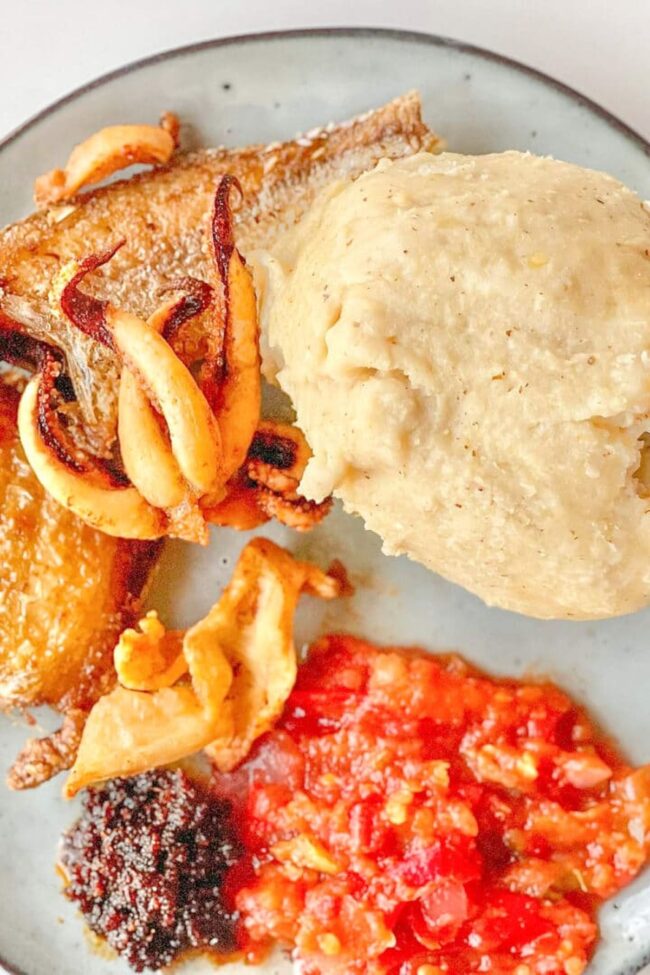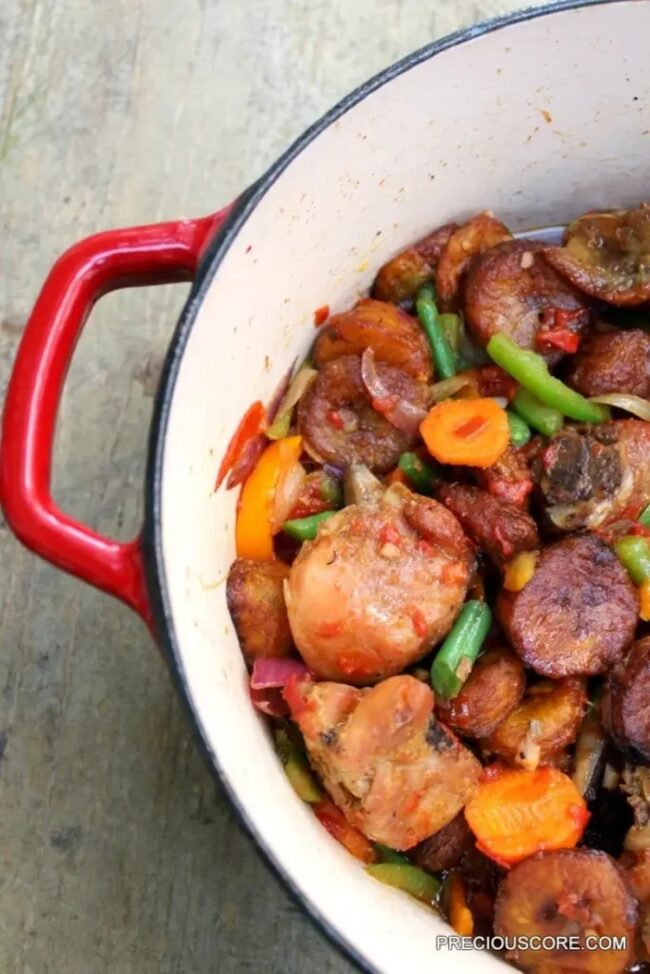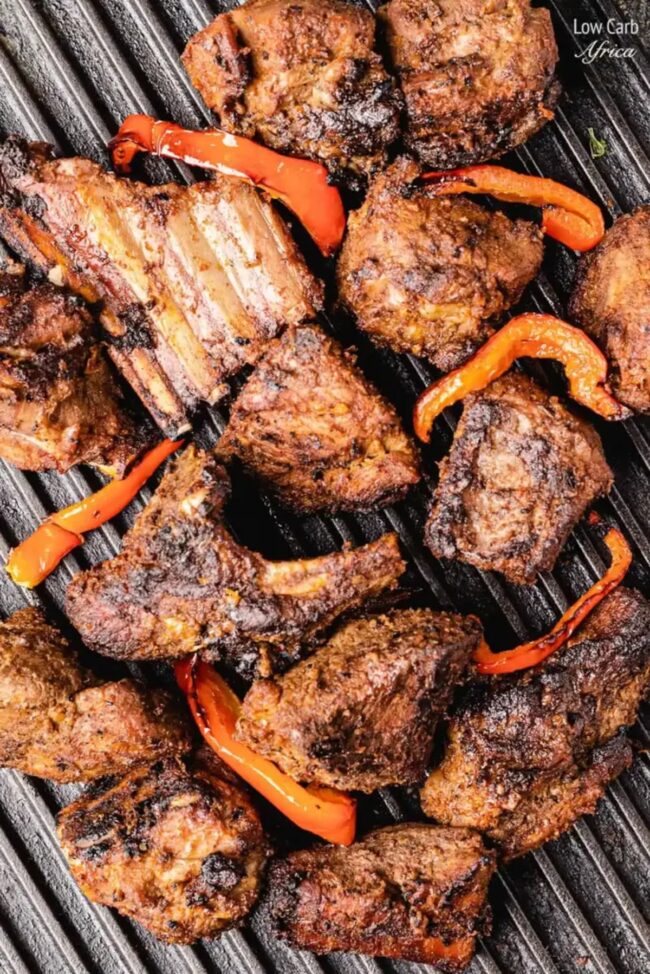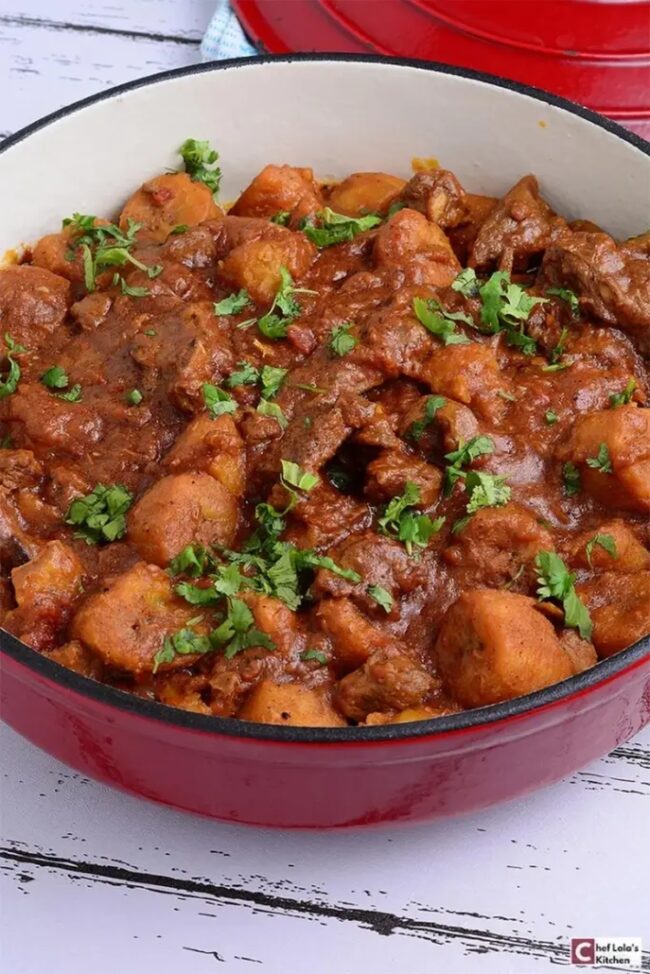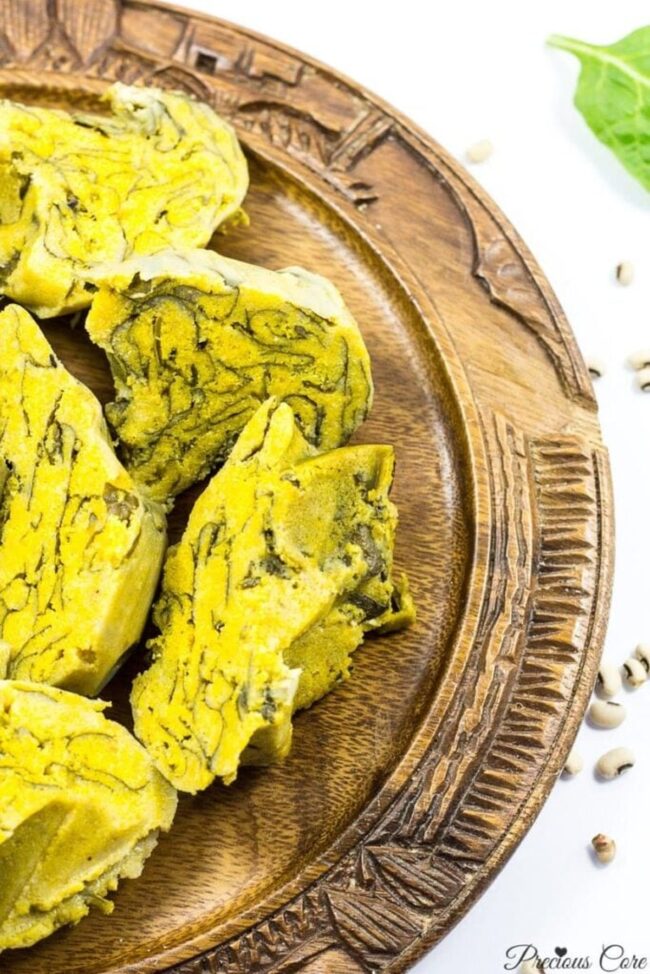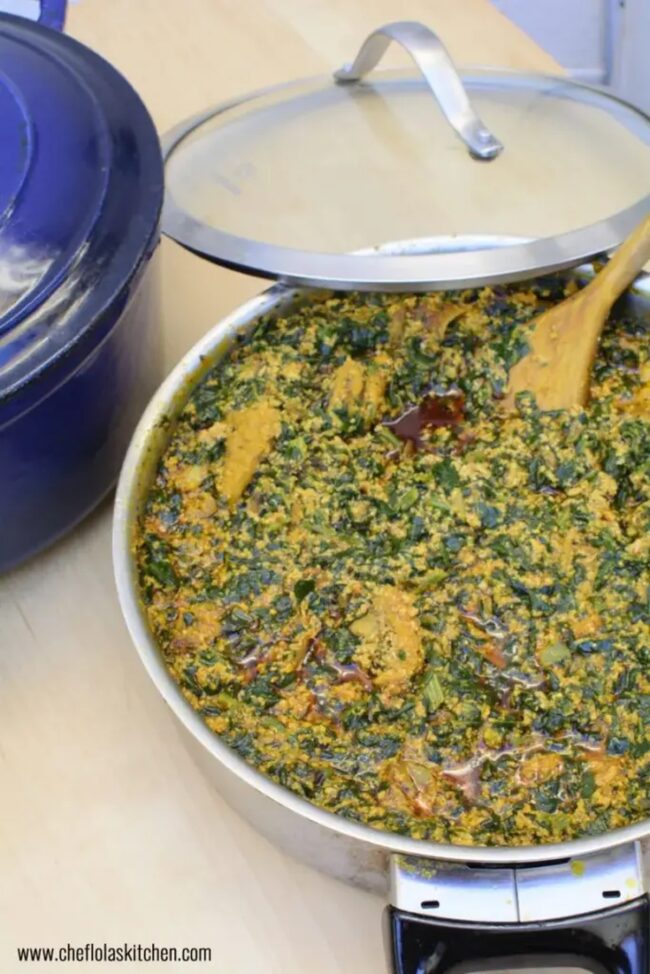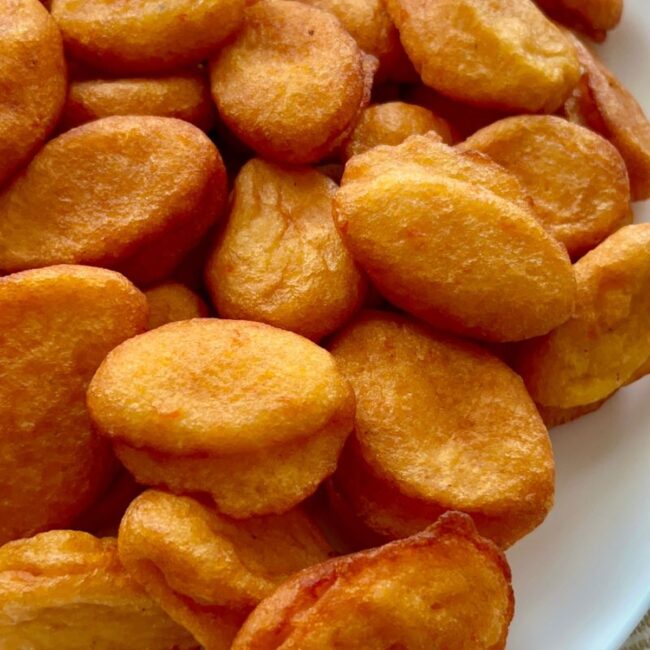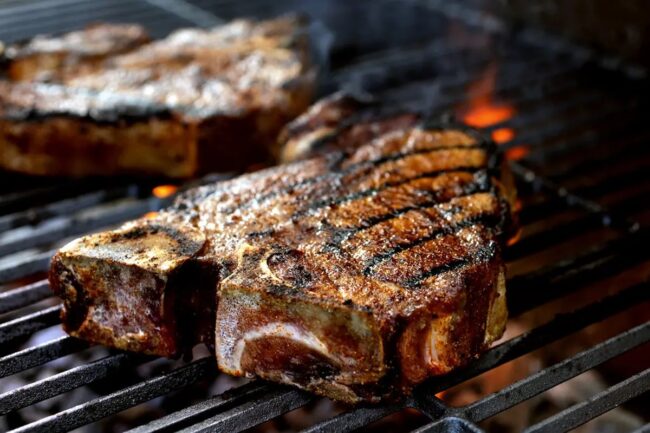30 Authentic African Dishes to Try
Traditional African recipes share bold flavors and diverse cooking styles from across the continent.
Unique spices, vibrant vegetables, and hearty grains come together in every dish.
These meals tell stories of culture, history, and community.
Simple techniques make them approachable for any cook.
African Cuisine At A Glance
African cuisine is diverse, rich, and full of vibrant flavors. Each region has unique ingredients and cooking traditions.
Cultural Food Impact
Celebrations and traditions often revolve around food in African cultures.
Special occasions, such as weddings or harvests, feature unique dishes that hold deep meanings.
Cooking skills are treasured, with recipes typically shared orally from mothers to daughters.
Methods like grilling and stewing create diverse flavors across the continent.
Open fires add a smoky essence to many meals while fermentation preserves ingredients and enhances taste.
Communal dining strengthens connections among family and friends during these gatherings, making each meal an important social event.
Most Used Ingredients
Many African meals rely on staple grains such as rice, millet, sorghum, teff, and corn.
Tubers like yams and cassava play an important role in the diet too.
Beans and peanuts serve as excellent sources of protein for many communities.
A variety of vegetables enhances these dishes; okra, eggplant, tomatoes, onions, and leafy greens are common choices across different regions.
Flavorful spices like berbere and harissa bring exciting tastes to the table alongside herbs such as cumin and coriander.
When available, meat options like goat or chicken are popular choices while coastal areas often include seafood in their cuisine.
Regional Cooking Styles
Exploring the diverse flavors of African cuisine reveals a rich tapestry of ingredients and traditions.
Central Africa stands out with its reliance on cassava, plantains, and fish; fufu, a dough-like dish, is often served alongside various meals.
In East Africa, grains and dairy play significant roles in daily cooking; staples like Ethiopian injera bread and Kenyan ugali highlight this region's culinary heritage.
West African dishes bring heat to the table through spicy stews; jollof rice remains a favorite among many.
Southern Africa showcases European influences with grilled meats taking center stage while pap offers a comforting cornmeal porridge option for many diners.
North African cuisine elegantly blends Mediterranean and Middle Eastern elements featuring tagines, couscous, flatbreads.
African Food Recipes with Rich, Bold Tastes
African dishes are bursting with bold spices, fresh vegetables, and rich flavors. They are exciting ways to discover a global cuisine.
Jollof Rice
Celebrations in Nigeria, Ghana, and neighboring countries often feature jollof rice.
This popular West African dish has a special place at gatherings.
Creating jollof rice involves blending tomatoes, peppers, and onions to form a tasty base enriched with spices such as thyme and curry powder.
Rice joins the mix next; it soaks up the vibrant sauce while cooking in stock until tender.
A signature orange-red hue marks its finished look.
Chicken, fish, or beef makes excellent companions for this flavorful dish; adding vegetables like carrots or peas boosts both nutrition and taste.
Piri Piri Chicken
Piri Piri chicken offers a bold and spicy flavor that many people love across Africa.
A marinade is made by blending chili peppers, garlic, lemon juice, and various spices.
After coating the chicken pieces in this mixture, letting them marinate for at least an hour enhances the taste.
Cooking methods include grilling over medium-high heat for about 25 minutes or baking in a 400°F oven for 35-45 minutes.
Basting with extra sauce during cooking keeps the meat juicy while adding depth to its flavor profile.
Once it reaches an internal temperature of 165°F, serve this delicious dish hot alongside your favorite sides.
Bobotie
A taste of South African cuisine awaits with bobotie, a dish that truly impresses.
This casserole features curried ground beef or lamb, combined with sweet fruits like raisins or dried apricots for added flavor.
Aromatic spices such as curry powder and ginger enhance its rich profile.
A layer of egg custard crowns the dish, baked to a golden perfection that adds delightful texture contrasts.
Typically served alongside yellow rice and chutney, this meal brings together an exciting mix of tastes in every bite.
Making bobotie at home offers a wonderful chance to explore the unique culinary traditions of South Africa.
Bunny Chow
A filling and satisfying meal, Bunny Chow is often enjoyed by tearing off pieces of bread to scoop up the curry.
This dish is traditionally eaten with hands, adding a fun element to the dining experience.
Originating in Durban, South Africa, it features a loaf of bread hollowed out and filled with flavorful curry.
Popular ingredients include chicken or lamb alongside potatoes, onions, garlic, ginger, tomatoes and spices like curry leaves for added taste.
Cooking until the meat becomes tender allows all the flavors to blend beautifully together before serving hot in freshly scooped-out bread halves.
The preparation begins by crafting a delicious curry that sets this dish apart from others.
Injera
Injera serves as both a flatbread and an eating tool in Ethiopian cuisine.
Made primarily from teff flour, this bread has a soft and porous texture that soaks up delicious sauces and stews.
Preparation involves mixing teff flour with water, allowing it to ferment for several days to develop its distinct tangy flavor.
Cooking the batter on a hot griddle creates its signature spongy surface.
Many Ethiopian meals feature injera alongside dishes like Doro Wat, which is a spicy chicken stew, or Misir Wat, made with red lentils.
Its versatility makes it an essential part of enjoying traditional Ethiopian flavors.
Pap en Vleis
Two main parts create the cherished South African dish known as Pap en Vleis.
Thick maize porridge, called pap, serves as the starchy foundation of this meal.
For the protein, vleis refers to various meats like beef, lamb, or chicken.
Marinating meat in soy and teriyaki sauces enhances its taste before frying it with onions, garlic, and ginger for a savory finish.
Cooking pap involves boiling water and gradually mixing in maize meal until it becomes smooth and thick.
This satisfying dish makes gatherings special while showcasing rich South African culinary traditions.
Fufu
This cherished dish holds a special place in West African culture.
Many traditional meals feature fufu, showcasing its dense and stretchy texture.
Starchy ingredients like cassava, plantains, or yams create this delightful side dish after boiling and pounding them into a smooth dough-like form.
Sharing fufu is an experience; small pieces are pinched off to dip into soups and stews.
Beyond its role as food, fufu fosters connections among people during communal dining experiences.
It symbolizes togetherness around the table in countless households throughout the region.
Chapati
In East Africa, chapati enjoys great popularity as a flatbread.
Simple ingredients like flour, water, and salt create this delicious treat.
After mixing these items into a soft dough and kneading for about 10 minutes, resting the dough for half an hour helps enhance its texture.
Small balls of the rested dough become thin circles when rolled out.
Cooking each circle on a hot skillet until golden brown spots emerge adds flavor and charm to the bread.
Warm chapati pairs wonderfully with stews or curries or serves as an excellent wrap for various fillings.
Suya
Street vendors often sell suya in the evening, making it a vibrant part of West African culture.
This beloved dish features thinly sliced beef seasoned with a spicy peanut mixture and grilled on skewers until just right.
The seasoning, known as suya, combines ground peanuts with spices and chili peppers to create an exciting blend of flavors that are both nutty and spicy.
Typically served alongside raw onions, tomatoes, and lime juice, some versions might include fresh lettuce or cilantro for added freshness.
Making this dish at home allows anyone to experience the bold tastes of West Africa by marinating beef strips in that flavorful spice mix before grilling them up perfectly.
Enjoying this street food brings an authentic taste right into your kitchen!
Chakalaka
A warm serving of chakalaka pairs wonderfully with grilled meats or pap, adding a lively South African touch to any meal.
This dish shines at barbecues and family gatherings, making it an excellent choice for those looking to spice up their dining experience.
Common ingredients such as carrots, peppers, onions, and beans come together easily in this recipe.
Sautéing onions in oil sets the base for flavors; garlic and ginger join the mix along with spices like curry powder and paprika for depth.
Chopped carrots and peppers soften beautifully before diced tomatoes and baked beans are stirred in to create a hearty blend that simmers until thickened.
Seasoning it all with salt and pepper enhances every bite of this delightful side dish.
Sese Plantains
Sese plantains offer a delightful taste of Cameroonian cuisine, rich with flavors.
This dish combines green plantains and meat, creating a filling experience.
Cooking occurs in red palm oil, enhanced by spices that bring out the best in each ingredient.
Onions, tomatoes, and hot peppers add depth to the flavor profile.
Often served during weekends or special occasions, it makes for an excellent one-pot meal for family gatherings.
Exploring this hearty dish introduces you to the vibrant culinary traditions of West Africa.
Droewors
A chewy and savory snack, droewors holds a special place in South African cuisine.
This dried sausage can be made from beef, pork, or game meat.
Its Afrikaans name translates to “dry sausage.” Mixing ground meat with spices like coriander, black pepper, and salt creates the flavorful filling.
After stuffing the mixture into thin casings, the sausages hang for several days to dry out completely.
Droewors lasts without refrigeration and makes an excellent protein-rich option for road trips or hikes.
Koki Corn
Koki Corn serves as a beloved dish in Cameroon, enjoyed by many during gatherings and celebrations.
This filling treat can be eaten hot or cold, making it versatile for any occasion.
The preparation begins with soaking corn in water before blending it into a smooth paste.
Palm oil, salt, and sometimes spicy peppers add rich flavor to the mixture; recipes may also include cornmeal or chopped leaves for variety.
Wrapping the blend in leaves or foil allows for steaming until it becomes firm and soft.
Ugali
This dish often accompanies stews, meats, and vegetables.
Ugali is a beloved staple in numerous African nations.
Made from cornmeal or maize flour mixed with water, it has a smooth texture that many find satisfying.
Cooking begins by boiling water in a pot; gradually adding cornmeal while stirring ensures even consistency without lumps.
Once the mixture thickens into dough-like form, shaping it into a mound prepares it for serving hot.
Eating ugali typically involves using hands to pinch off pieces for scooping other dishes, creating an enjoyable dining experience.
Mandazi
Lightly sweetened and aromatic, mandazi are a favorite treat in East Africa, particularly in Kenya and Tanzania.
A crispy outside gives way to a soft, fluffy inside.
Essential ingredients include flour, sugar, yeast, cardamom, and coconut milk.
Creating the dough involves mixing these elements before allowing it to rise until it doubles in size.
Once ready, cut the dough into triangles or squares and fry them until they turn golden brown.
These pastries pair wonderfully with tea or coffee and can be enjoyed plain or with a sprinkle of powdered sugar for added sweetness.
Amala
A smooth, stretchy dough forms when yam flour is mixed with boiling water.
This process requires quick stirring to prevent lumps from forming.
Many Nigerian households consider amala a staple food due to its unique texture and versatility.
Small balls can be shaped for easy consumption, enhancing the dining experience.
Serving it alongside savory soups and stews makes for a delightful meal, especially with okra soup as a favorite pairing.
Originating from dried and ground yams, this beloved West African dish has gained popularity throughout Nigeria over the years.
Ewedu Soup
Rich in flavor, ewedu soup is a cherished dish in Nigerian cuisine made from jute leaves.
Quick and easy to prepare, it often pairs beautifully with amala, a traditional dish crafted from yam flour.
The cooking process begins with thoroughly washing the jute leaves before boiling them for 8-10 minutes until tender.
After that, adding crayfish, locust beans, salt, and seasoning boosts the taste significantly.
Some chefs use a small broom called ijabe to blend the cooked leaves into a smooth consistency.
For an extra kick of flavor, mixing ground melon seeds (egusi) with water forms a paste that can be added to enrich the soup further.
Plantains
Many African dishes feature plantains as a key ingredient.
Kelewele, a well-loved snack from Ghana, showcases their versatility.
Cubes of ripe plantains seasoned with ginger, garlic, and spices fry to a perfect golden brown and create an irresistible treat.
For those seeking healthier choices, baking sliced plantains with just a dash of salt results in crispy chips or an excellent side dish for any meal.
Additionally, mashing cooked plantains transforms them into fufu, a doughy delight that pairs wonderfully with soups or stews for added heartiness.
Alloco
Fried plantains known as alloco are a cherished dish in West Africa, particularly in Ivory Coast and Ghana.
Ripe plantains with dark peels provide the best flavor.
Slicing them diagonally and frying them until golden creates a crispy outside with a soft inside.
This treat serves well as both a snack or side dish, appealing to various tastes.
Many enjoy it plain or paired with spicy tomato sauce for an extra kick; some recipes even add fried onions and peppers for added depth.
Alloco offers an authentic taste of West African cuisine that never disappoints.
Githeri
Githeri offers a true taste of Kenyan culture, enjoyed widely across East Africa, especially by the Kikuyu people.
This dish combines corn and beans boiled together, creating a nutritious and filling meal.
Many variations include potatoes, tomatoes, and spices to enhance its flavor profile.
Suitable for various diets due to its vegan and gluten-free nature, githeri can be prepared with fresh or dried ingredients.
Often served at breakfast but perfect any time of day, this hearty dish provides plenty of protein and fiber in every serving.
Trying githeri introduces an easy yet delicious way to savor authentic African cuisine.
Nshima
Nshima plays a vital role in Zambian culture as a key food item, often accompanying most meals.
This dish offers great energy and satisfaction.
Made from maize flour, it serves as the main carbohydrate source for many families.
Preparing nshima involves boiling water in a pot and gradually mixing in maize meal while stirring until it reaches a thick consistency.
Typically enjoyed by hand, people roll it into small balls to dip into flavorful sauces or stews alongside meat or fish dishes.
Moin Moin
Nigerian bean pudding, known as Moin Moin, stands out for its rich flavors and nutritional benefits.
Black-eyed peas form the base of this dish, complemented by onions and ground peppers.
A smooth paste results from soaking and peeling the beans before blending them well.
Add ingredients like eggs, corned beef, or fish to enhance the taste further.
Pouring this mixture into molds or leaves precedes steaming until it becomes firm and fully cooked.
As a side dish or snack, it pairs wonderfully with rice, garri, or bread.
Kenkey
A traditional meal often includes kenkey, which pairs well with fried fish.
This dish features a spicy sauce made from ground onions, tomatoes, and chilies that enhances its flavor.
Kenkey comes from Ghana and has a unique tangy taste thanks to the fermentation process of white cornmeal mixed with water over 1-3 days.
Cooking half of the dough in water creates a smooth consistency before combining it with the remaining mixture.
After shaping into balls and wrapping them in corn leaves, steaming lasts for about 30-60 minutes to finish this delightful dish.
Warm or at room temperature, kenkey offers a satisfying experience for anyone who tries it.
Poulet DG
The dish features a delightful blend of flavors and textures.
Tender chicken complements soft plantains, creating a satisfying meal.
Rich tastes come from various herbs and spices, including garlic, ginger, chili, and pepper.
Often served at celebrations or significant events in Cameroon, this dish holds special meaning as it translates to "chicken for the Director General." Popular in African restaurants worldwide, Poulet DG has gained recognition beyond its homeland.
Cooking this meal involves simmering chicken with plantains while infusing it with aromatic seasonings for an unforgettable experience.
Nyama Choma
In East Africa, nyama choma holds a special place in culinary traditions.
This dish, which translates to "roasted meat" in Swahili, showcases goat, beef, or chicken grilled over an open flame.
Often marinated with simple spices, the meat highlights its rich flavors and smoky aroma.
Enjoying this dish typically involves sides like ugali, a thick cornmeal porridge, and kachumbari, a fresh salad made of tomatoes and onions that enhance the meal's taste.
Celebrations and gatherings frequently feature nyama choma as a central element that unites people around good food and shared moments.
Popular across Kenya, Tanzania, and Uganda; it truly represents community spirit through cuisine.
Matoke
Matoke, a beloved dish from Uganda, features green cooking bananas.
First, sauté onions in oil to create a flavorful base.
Tomatoes and bell peppers join the mix along with spices like curry powder and paprika for added zest.
After peeling the bananas, they get added to the pot with some water or stock for moisture.
A gentle simmer of 20-30 minutes allows everything to blend beautifully as the bananas soften.
Once cooked, mash them into a creamy paste and combine with the sauce; this hearty meal pairs wonderfully with beef, beans or groundnut sauce while being both filling and nutritious.
Koki Beans
A delicious dish from Cameroon, koki beans features a pudding-like texture made from black-eyed peas.
This savory treat combines black-eyed peas, red palm oil, salt, and hot pepper.
Some variations include spinach for extra flavor and nutrition.
The preparation begins with grinding the black-eyed peas into a coarse paste before mixing in the other ingredients.
Wrapping the mixture in banana leaves allows it to steam until fully cooked, creating a moist result.
Koki beans serve well on their own or alongside boiled plantains and hold great appeal as street food throughout Cameroon.
Egusi Soup
Fufu pairs wonderfully with egusi soup, a hearty dish loved across West Africa, particularly in Nigeria.
Made from ground melon seeds, this soup showcases a distinct taste and creamy texture.
Preparing it requires mixing ground egusi seeds with water to create a thick paste.
Cooking your choice of meat or fish until tender comes first; then add the paste and let it simmer until the mixture thickens.
Including vegetables like spinach or pumpkin leaves enhances its nutritional value while onions and peppers elevate the flavor profile.
Many people appreciate this satisfying meal for its rich flavors and wholesome ingredients.
Akara
Crispy on the outside and fluffy on the inside, akara are tasty bean fritters loved across West Africa.
Commonly found in Nigeria, Ghana, and Benin, these treats make a great breakfast or snack.
Ingredients include black-eyed peas, peppers, onions, and spices.
After soaking and peeling the beans, blending them into a smooth paste is essential before mixing in chopped veggies for added flavor.
Spoonfuls of this batter fry until golden brown in hot oil to achieve that perfect texture.
Serve them hot with sauce or as part of a meal for an enjoyable experience full of delightful tastes.
Braai
A braai represents a cherished barbecue tradition in South Africa, serving as a lively social gathering.
Guests enjoy various meats, with boerewors, lamb chops, and chicken being favorites.
Grilling seafood like snoek adds an exciting twist; this fish is coated with apricot jam and spices before cooking over the flames.
Pap provides a tasty side dish along with braaibroodjies, which are grilled sandwiches filled with cheese and tomato.
Chakalaka stands out as a flavorful vegetable relish that complements the meal beautifully.
Setting up requires just a grill or fire pit to get started on this culinary adventure.
Everyday Basic Cooking Methods
Everyday cooking methods make meal prep easier and faster. Simple techniques help bring out the best flavors in food.
Traditional Cooking Methods
Cooking with earth ovens has deep roots in Africa.
Hot stones line a hole dug into the ground, where food is placed and covered with leaves.
This method allows for tender meat as it cooks slowly.
Grilling over open flames also holds great appeal, offering a chance to prepare meats, vegetables, and flatbreads while adding rich flavors from the smoke.
Another essential technique involves wrapping food in large leaves like banana before steaming it.
This process preserves moisture and enhances dishes with gentle tastes that make meals even more enjoyable.
Modern Cooking Trends
Modern cooking in Africa blends new technology with time-honored techniques.
Traditional methods remain important, even as many cooks embrace contemporary stoves and ovens.
Slow cookers excel at preparing stews and sauces, allowing flavors to develop over hours without constant attention.
Air fryers provide a healthier way to enjoy fried favorites like plantains or yam chips, using minimal oil for a lighter dish.
Regular ovens can mimic the effects of earth ovens, offering versatility in cooking styles.
This fusion of old and new creates delicious meals that honor heritage while embracing innovation.
Essential Kitchen Tools
Essential tools fill African kitchens, with mortars and pestles leading the way.
Grinding spices and crushing grains become effortless tasks with these items.
Clay pots play a crucial role in preparing stews and soups, ensuring even cooking while preserving rich flavors.
Cast iron pots, known for their durability, excel at creating satisfying one-pot meals like jollof rice.
Wooden spoons alongside calabash gourds serve as common utensils for serving food throughout many households on the continent.
These kitchen essentials reflect a deep connection to culinary traditions that have been cherished over generations.

